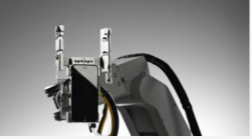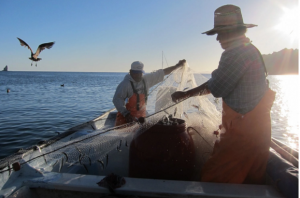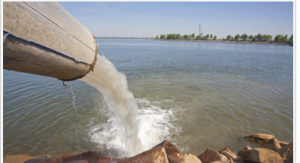 On Thursday the Prime Minister will make the environmental case for Britain’s place in Europe. He is right to bring this important issue to the top of his agenda.
On Thursday the Prime Minister will make the environmental case for Britain’s place in Europe. He is right to bring this important issue to the top of his agenda.
How nature is managed and protected affects us all, and the outcome of the EU referendum will have profound implications for the future of our countryside, wildlife, rivers and seas.
The World Wildlife Fund (WWF) and the Royal Society for the Protection of Birds (RSPB) will not be telling people how to vote, and we recognise that voters will be weighing up a range of issues when casting their votes on June 23.
But our supporters, staff and volunteers all share a concern for nature – David Cameron’s intervention should encourage everyone to put environmental considerations at the heart of the referendum debate.
The evidence shows that the EU, and the UK’s membership of it, has on balance had a positive impact on the environment in the UK, across Europe and indeed globally – from protecting forests and wildlife and preserving rare species to improving air and water quality, and cutting global emissions.
EU standards have safeguarded streams and rivers that are home to much-loved British wildlife such as water voles, kingfishers, brown trout, otters and the bittern. They have helped protect and restore precious heaths and woodlands that are essential for butterflies and bees. Read More
Read the entire article at The Telegraph.
This was originally published on The Telegraph written by David Nussbaum.

 They call it “the Never-Ending Storm of Catatumbo,” or “Maracaibo’s Lighthouse.” Its lightning is so familiar, people in the state of Zulia in Venezuela even put it on their
They call it “the Never-Ending Storm of Catatumbo,” or “Maracaibo’s Lighthouse.” Its lightning is so familiar, people in the state of Zulia in Venezuela even put it on their  The forerunners of ExxonMobil patented technologies for electric cars and low emissions vehicles as early as 1963 – even as the oil industry lobby tried to squash government funding for such research, according to a trove of newly discovered records.
The forerunners of ExxonMobil patented technologies for electric cars and low emissions vehicles as early as 1963 – even as the oil industry lobby tried to squash government funding for such research, according to a trove of newly discovered records. Have you ever wondered if the water in your house is safe to drink? While many have been angered by the news that children in Flint, Michigan were exposed to abnormally high amounts of lead in their drinking water, clean water is actually a problem for millions of Americans.
Have you ever wondered if the water in your house is safe to drink? While many have been angered by the news that children in Flint, Michigan were exposed to abnormally high amounts of lead in their drinking water, clean water is actually a problem for millions of Americans.
 Establishing nature preserves and other types of protected areas is one of the most common conservation strategies — and its benefit to the environment is clear. What’s less obvious, though, is how these protected areas affect the human communities nearby.
Establishing nature preserves and other types of protected areas is one of the most common conservation strategies — and its benefit to the environment is clear. What’s less obvious, though, is how these protected areas affect the human communities nearby. Ruchit Garg, a Silicon Valley entrepreneur, says that he worries that something isn’t right with his Internet shopping habit. With each new delivery to his doorstep — sometimes several in a day — he faces the source of his guilt and frustration: another cardboard box. Ruchit Garg, a Silicon Valley entrepreneur, says that he worries that something isn’t right with his Internet shopping habit. With each new delivery to his doorstep — sometimes several in a day — he faces the source of his guilt and frustration: another cardboard box.
Ruchit Garg, a Silicon Valley entrepreneur, says that he worries that something isn’t right with his Internet shopping habit. With each new delivery to his doorstep — sometimes several in a day — he faces the source of his guilt and frustration: another cardboard box. Ruchit Garg, a Silicon Valley entrepreneur, says that he worries that something isn’t right with his Internet shopping habit. With each new delivery to his doorstep — sometimes several in a day — he faces the source of his guilt and frustration: another cardboard box. New York State residents have long enjoyed high quality, affordable potable water; the result of the State’s protected source waters and reservoirs, and robust testing and filtration programs. In fact, most New Yorkers have taken the quality of their potable water for granted. But in recent weeks two upstate New York towns – Hoosick Falls and Petersburg – have detected elevated levels of perfluorooctanoic acid (PFOA) in their drinking water supplies, leading state and federal authorities to warn residents against using tap water for human consumption.
New York State residents have long enjoyed high quality, affordable potable water; the result of the State’s protected source waters and reservoirs, and robust testing and filtration programs. In fact, most New Yorkers have taken the quality of their potable water for granted. But in recent weeks two upstate New York towns – Hoosick Falls and Petersburg – have detected elevated levels of perfluorooctanoic acid (PFOA) in their drinking water supplies, leading state and federal authorities to warn residents against using tap water for human consumption.
 Seriously, what did we do before Google? Not only do we have information on virtually everything under, on and above the sun, but we also now have data and trends.
Seriously, what did we do before Google? Not only do we have information on virtually everything under, on and above the sun, but we also now have data and trends.
